As a professional marketer, you have already honed your skills, so this guide is aimed at adding polish, serving as a refresher and offering insight into the latest technology applications.
Email inboxes are crowded and full of distractions. Hyper-personalised emails provide a way to cut through the clutter and show subscribers that you have something to say that matters to them. According to a survey published by Forbes, nearly 60% of the most successful email marketers think personalisation is one of the best ways to increase engagement. Unfortunately, it doesn’t distinguish what each considers to be personalisation.
Of course, that also means many other brands are using hyper-personalised emails to stand out. We are not going to waste your time or trivialise the subject by discussing first names in the subject lines, it’s both trite and passé.
See our article Successful email personalisation is a simple step.
What are hyper-personalised emails?
Email hyper-personalisation what is it and how to do it. On one level it is a digital marketing tactic that typically involves the use of subscriber data to create a custom experience for different individuals. Hyper-personalised emails give marketers the ability to target specific subscribers with special offers, relevant content, and important information, to a specific individual.
When done well, hyper-personalised emails feel as if the message was written and designed just for the subscriber. And in some cases it was! But automation, machine learning and artificial intelligence (AI) often play a role in creating that unique message.
The goal of email hyper-personalisation is to create a more personal email experience. The inbox is a private, personal place. When your brand’s emails arrive, you want people to feel like they’re hearing from a trusted friend. Because the last thing anyone needs is another advertisement.
A strong email hyper-personalisation strategy will have people anticipating your emails, and it can certainly make emails more relevant. However, keep in mind that using personalisation doesn’t necessarily make emails feel personal – especially in a world full of savvy consumers. Don’t test their patience or try and be clever or sneaky.
Stats on hyper-personalised marketing
If you’re just venturing into the possibilities of personalised emails, there’s no better time to start than now. Recent studies show marketing personalisation has gone mainstream.
In fact, according to research from McKinsey & Company, 71% of consumers say they expect personalised marketing and 76% get frustrated when it’s not there.
Email is the most popular and perhaps the most powerful place to implement personalisation. Statista reports that 78% of marketers are using email for personalised communication. That far outpaces the next most popular channel, your website, which 56% of marketers are personalising. Only around one-third are personalising experiences in paid ads, social media, and mobile applications.
McKinsey and Company also found that brands using personalisation generate 40% more revenue than those that don’t.
Subscribers want it and expect it. It helps boost email engagement. And, it delivers such a significant increase in sales, that its omission would be the most heinous crime against success.
The hierarchy of email hyper-personalisation
As you’ve probably noticed in your inbox, not all email personalisation is created equal. Let’s take a look at how to get started and where you can go with personalised emails.
As the first level of personalisation involves strategically inserting a contact property, often your subscriber’s name, into the email – usually in the subject line or the initial greeting. We’re going to skip over it, as this article is for professional marketers.
Segmentation and hyper-personalisation
The next level of email hyper-personalisation no longer groups your contacts into segments so that you can tailor the experience to different types of subscribers. Segmentation has had its day, as the advent of AI has obliterated it, as you can speak to a segment of one with massively greater effect and return While we understand the necessity for promotional and incentive groups, the idea of not making every communication individual to each person would deliver a mere fraction of the new champion.
If you’re still batch-and-blasting the same campaigns to your entire email list, you’re going to love the results you get from hyper-personalisation. Segmentation and hyper-personalisation are two distinctly different practices.
Advanced email hyper-personalisation
The masters of email marketing hyper-personalisation can deliver email campaigns that feel like they were made precisely for the individual. When people open these emails they should think, “These people understand exactly what I want!”
The key to creating this kind of hyper-personalised inbox experience is access to the right data and the ability to integrate it with email.
In some cases, subscribers may be generating that data as they browse your website or use your application. Some of the best, hyper-personalised email experiences come from brands that take user data so every product selected suits the immediate demands, that change tomorrow.
The highest echelon: reserved for AI hyper-personalisation
Marketers using machine learning AI track both website and application activity perpetually. It is an autonomous personalisation system, that requires zero human input whatsoever, and it makes returns 20x greater in comparison to any of the examples above and omnichannel marketing combined. It removes not only the cost of human involvement but their errors and omissions too.
Essential reading on the cost of your employees: How much do your staff truly cost?
Dynamic content becomes an integral element in all predictive personalised emails, which smashes ROI. Using dynamic content with personalised emails packs a powerful punch. For those researching hyper-personalisation, it is essential you choose autonomous software with zero human interaction involvement to achieve the greatest returns or you could spend time and money, wasted on an inferior solution.
Context should be always and perpetually relevant to the email recipient. Context is the future of email personalisation. Dynamic content can change or update with every action made by the consumer interacting with both your site and your emails. That should include the item (SKU code as we are talking personalisation to that degree of sophistication), colour, style, fabric, size, cut, price but also time of day viewed, then purchased, those actions compared and about previous purchases and the pattern made to deliver this purchase to you.
Multiple surveys say that using dynamic email content achieves the highest ROI – including Forrester, McKinsey, Bain and Statista. Advanced email marketers using PPS know it will be presenting the exact image of each product with the highest buying propensity for that individual and unique customer, at precisely the right moment.






One Response
Great guide on personalized emails! 👏 Your tips are spot-on and easy to implement. Thanks for sharing these valuable insights!